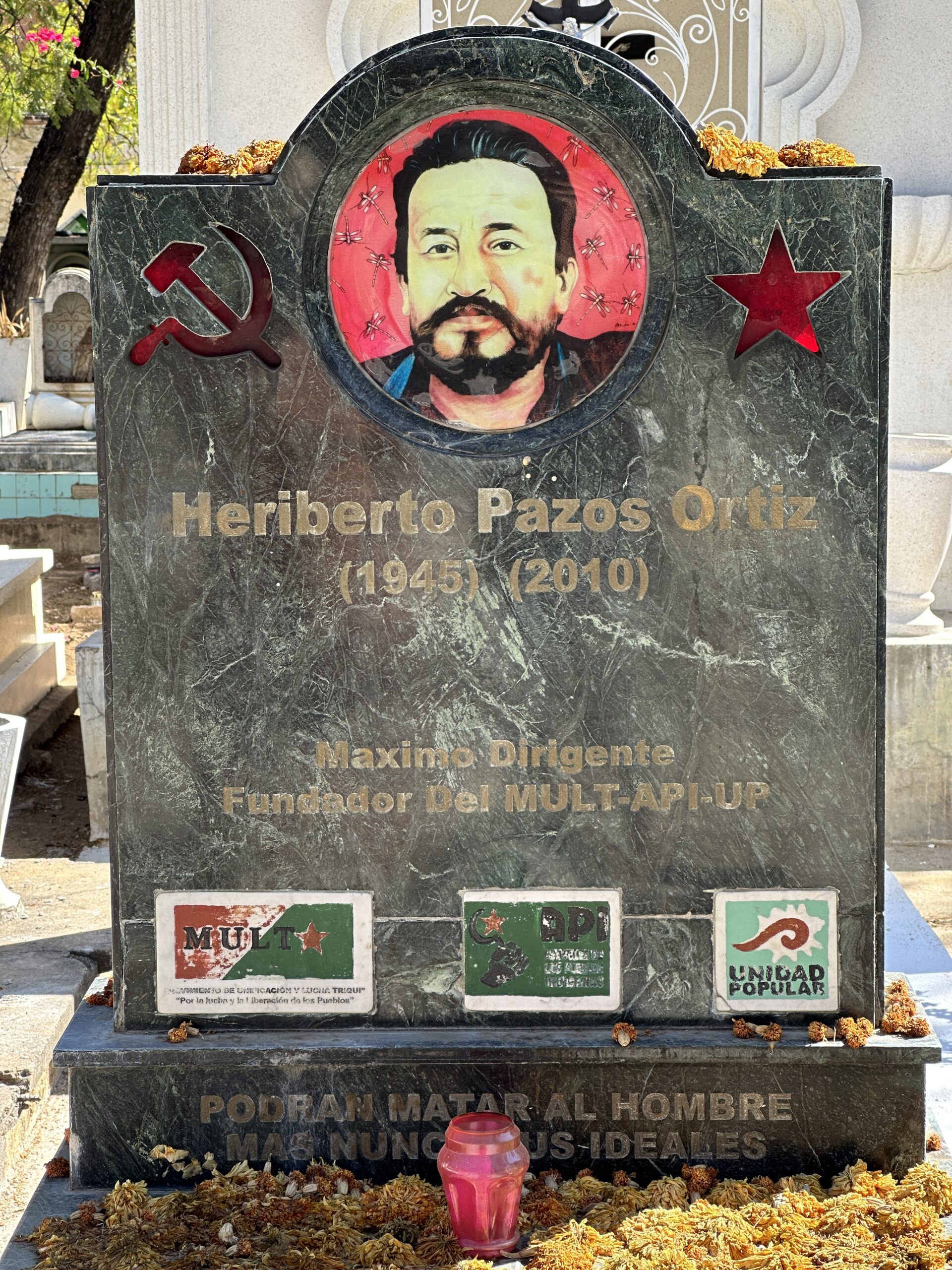I See Dead People

I know you come here for the incisive cultural commentary and the biting wit, but sometimes we’ve just seen something cool that warrants sharing.
Case in point, the Panteón General, which seems to be Oaxaca’s largest cemetery. I tend to think of cemeteries as parks with dead people. St. Louis’s Bellefontaine Cemetery is a classic example of the genre, where we’d go for walks on a nice day, take in the nature, and enjoy a crypt or two.
That was our thought as we took a short cab ride to Panteón General. The parks in Oaxaca are light on greenery, more public squares than full blown parks, so we thought a walk through the cemetery would be a lovely nature excursion.
Even the most cursory of research efforts would have disproven this theory. It’s not that there’s no foliage, but it’s scarcely a park. And it is full. We saw three different funerals while we were there, and couldn’t imagine where they’d find room for fresh bodies.
The cheek-by-jowl (mandible-by-scapula?) storage protocol leads to a very different esthetic than the cemeteries we’re used to. The feeling is kind of like the Barnes Museum in Philadelphia. Instead of each piece getting some respectful air around it, so you can contemplate it in isolation, everything is jumbled together and forced into a conversation with and about its neighbors.
As it happens, I didn’t care for the Barnes. I went expecting to be wowed by the juxtapositions (“Ooh, look what happens when you hang a Maori spear next to a Gauguin!”), but there was no intent behind the installations. Instead I felt like I was being forced to inhabit someone else’s psychosis: “If I hang the frames symmetrically, maybe the voices will stop.” Maybe for you, but they triggered mine.
There has obviously been no intent, at least from a design perspective, in the placement at Panteón General. Unless you think there’s an inherent esthetic underlying Tetris. But the effect is delightful and charming regardless, with more humor than we associate with cemeteries. Enjoy the view.







